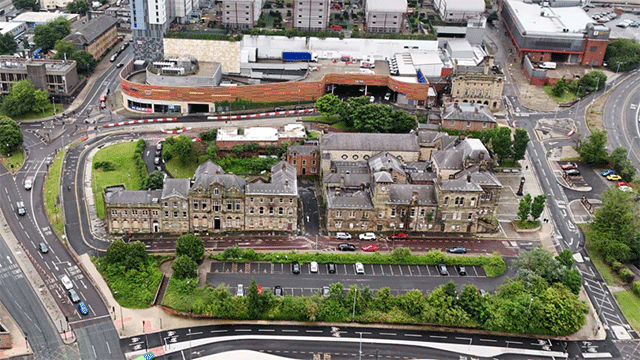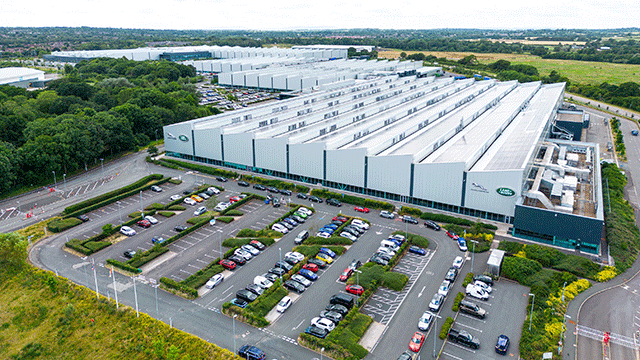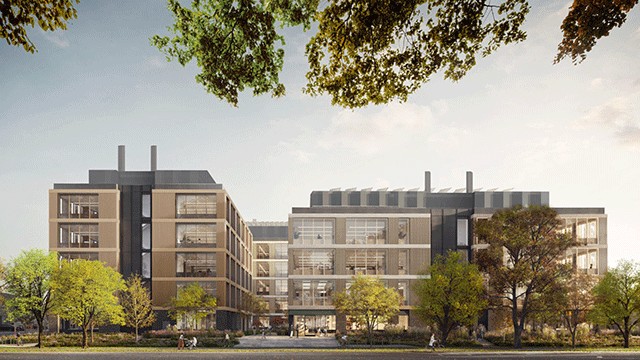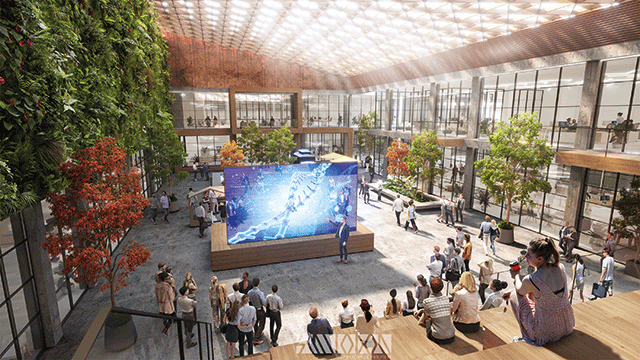The opening in 2005 of the Dublin Port Tunnel is already affecting the take-up of industrial space, with the resulting changes to availability and vacancy rates in different parts of the city. Donal Buckley reports
A number of factors are combining to raise questions about the future of Dublin’s industrial market.
Developers are offering owner-occupiers site and build deals rather than straightforward purchases in order to avoid stamp duty, which rose from 6% to 9% last December.
The deals allow occupiers the opportunity to buy a site and then sign a contract with the developer to construct a facility. Purchasers save on stamp duty on the cost of construction.
At the same time, property watchers are keeping an eye on government agency, IDA Ireland, which could reduce its presence in the Dublin market.
Meanwhile, the opening of the Dublin Port Tunnel in 2005 is already boosting demand for industrial space on the north side of the city.
The 4.5km-long tunnel will run from Santry in north Dublin to Dublin Port, taking all heavy traffic off city-centre roads.
The key issue, however, is surplus space. According to DTZ Sherry FitzGerald, the vacancy rate across the city is 14.8% and supply has reached a record 485,600m2.
Commentators agree with these vacancy figures, but there are differing views as to the amount of speculative build under way.
Marie Hunt, head of research at Insignia Richard Ellis Gunne, reports that a number of speculative schemes have commenced construction and will come on stream in the second half of this year.
On the other hand, both Caleb Kyle, divisional director of industrial at Lisney, and Gavin Butler, an associate director at CB Hamilton Osborne King, says there is little speculative development under way.
The difference could be attributable to the definition of speculative.
As Kelly explains: “We have noticed that purchasers of new speculative schemes are willing to commit to these developments early to avail themselves of land sales and building contracts and thus save on stamp duty.”
Others argue that such early deals might not be speculative, but simply presales by another name.
But this new type of demand is reducing that for certain types of existing stock, such as new stock in secondary locations and secondhand stock with low eaves heights.
Butler says Damastown and the emerging markets of Kildare and Meath, where demand for new stock has been especially weak, have been affected significantly.
Tim Scannell, a director at Lambert Smith Hampton, points out that much of the available secondhand space was vacated by large IT companies, such as the 30,700m2 (330,462 sq ft) Gateway premises in Clonshaugh Industrial Estate.
However, much of the Clonshaugh space is controlled by IDA Ireland, which will not allow it to be used by warehousing and logistics companies.
The situation is compounded by weak demand from the manufacturing sector, although pharmaceutical, food and building supply companies continue to perform well.
Ironically, the space available in the Clonshaugh Estate is sought keenly by distribution companies. This is because it is the closest estate to the Dublin Port Tunnel, making it well positioned for distributors importing goods through the port.
The IDA believes this advantage could help attract large international manufacturing companies to Clonshaugh.
Not that the IDA is as concerned to bring these type of operations to Dublin as it has been. In April it netted €28m from the sale of an equally well located 50-acre industrial site at Santry, about two miles west of Clonshaugh and nearer to both Dublin Airport and the M50 Dublin ring route.
Development plans
The disposal was the latest in a series of moves by IDA Ireland aimed at attracting more investment to the provinces.
Cosgrave Brothers, which bought the Santry site, is expected to include residential and other types of accommodation in its development plans. However, it is also likely to use the site’s proximity to the tunnel to attract logistics companies.
According to DTZ Sherry Fitzgerald, take-up is already being affected by the tunnel. The nearby area of north-west Dublin accounts for only 24% of the 509,000m2 of available accommodation whereas 42% is in the south-west.
Butler points out that the tunnel will reduce travel time from Santry to the port from one hour to only seven minutes. Santry lies about half way between the airport and the port. He also says that a major factor in choice of location is the West-Link toll bridge on the M50 ring route.
Many firms are already opting for facilities on the north side of Dublin in order to avoid the bridge.
The bridge, and proximity to the tunnel, are also reflected in an enormous wave of commercial activity in Ballycoolin, north-west Dublin.
“New schemes in Finglas including Northern Cross Business Park, North Park and Century Business Park, have all benefited from the prospect of easy access to the tunnel,” says Butler.
Industrial estates
Butler believes the tunnel could also generate development opportunities for nearby older industrial estates, such as Dublin Industrial Estate, where values have been hardest hit over the past 18 months.
Another area he believes will benefit from the tunnel is Balbriggan, about 13 miles north of the entrance. Balbriggan also enjoys a good road network via the M1 to Belfast.
“With the M1 motorway extension from Dublin Airport to Courtlough now almost completed, the port will be just30 minutes from the Balbriggan/M1 junction,” says Butler.
Many companies are looking forward to the opening of the tunnel, and following the negative impact of the rise in stamp duty, it is an added benefit to the market.
|
Industrial space by Dublin region |
||||
|
There is no accommodation in the eastern areas |
||||
|
Region |
Under construction (Not prelet/ presold) |
Availability (per m2) |
Total potential supply (per m2) |
|
|
NE |
0 |
123,000 |
123,000 |
|
|
NW |
14,550 |
132,150 |
146,700 |
|
|
SE |
0 |
24,550 |
24,550 |
|
|
SW |
8,800 |
205,900 |
214,700 |
|
|
Total |
23,350 |
485,600 |
508,950 |
|
|
Dublin: rents and prices for prime sheds (€ per m2) |
|||||
|
Rents are more and more being driven by a location’s access to the Dublin Port Tunnel |
|||||
|
Size (m2) |
North-east value/rent |
North-west value/rent |
South-east value/rent |
South-west value/rent |
|
|
0-200 |
1,435/116 |
1,298/103 |
2,389/137 |
1,367/109 |
|
|
200-500 |
1,400/113 |
1,264/100 |
2,187/121 |
1,367/109 |
|
|
500-900 |
1,36 /109 |
1,230/95 |
2,050/121 |
1,325/99 |
|
|
900-1,600 |
1,367/109 |
1,161/92 |
1,982/113 |
1,298/99 |
|
|
1,600-3,700 |
1,300/103 |
1,120/89 |
1,844/109 |
1,284/96 |
|
|
3,700 + |
1,300/100 |
1,093/86 |
1,640/109 |
1,264/96 |
|
|
Following last year’s drops, prices and rents have stabilised, according to Caleb Kyle of Lisney. With interest rates low, private Irish companies continue to prefer to purchase their own units. “Despite attractive incentives, there is a lack of larger good covenant tenants in the market,” says Kyle. Insignia Richard Ellis Gunne estimates prime rents at €116 per m² and secondary rents at €89 per m². DTZ Sherry FitzGerald says south-east Dublin was the only region to experience a softening of values during the first three months of this year. As a result, the north-west and south-west regions continue to offer the best value for money, with rents for smaller units around €100 per m², while rents for units greater that 1,850m² from €86 to €96 per m². “The strength of supply has resulted in greater flexibility in lease terms with premiums now becoming very rare, even for accommodation in the south-east,” says IREG. “In contrast, reverse premiums have become more commonplace given that many of the leases on secondhand space were negotiated in a climate of strong market activity.” |
|||||










